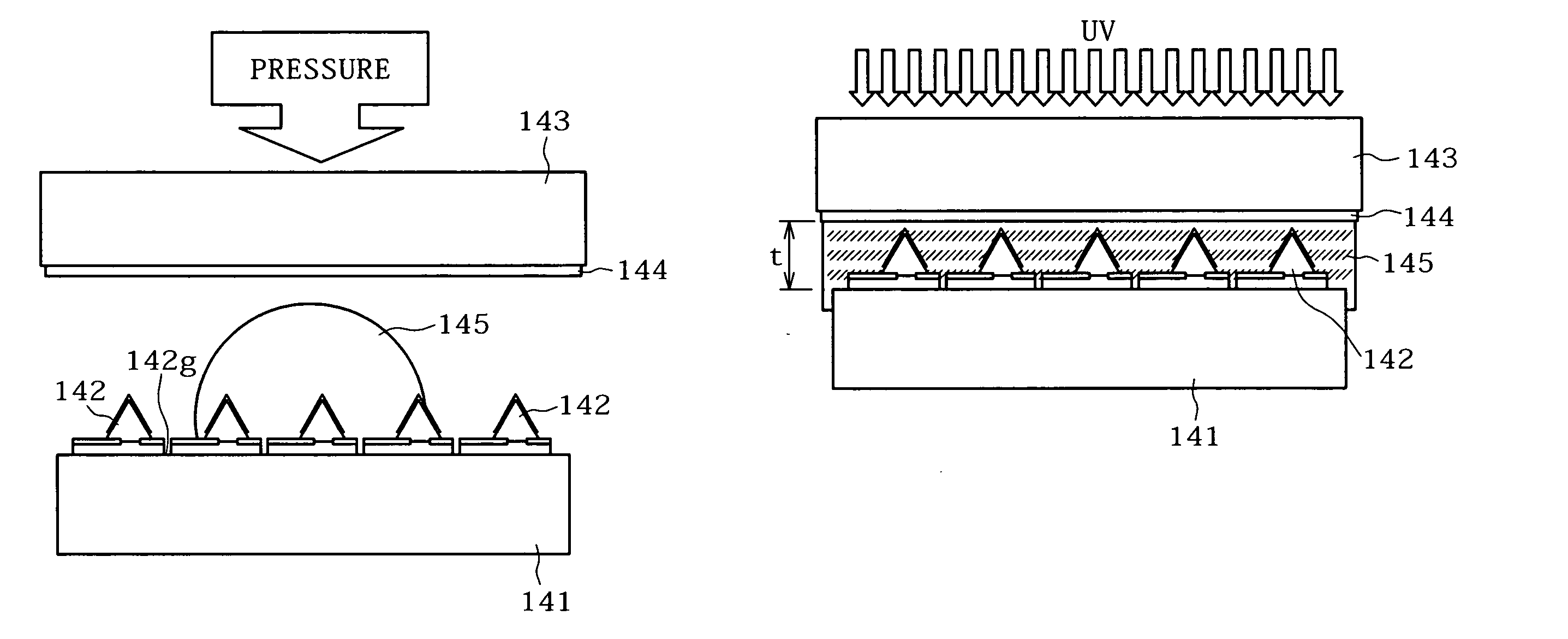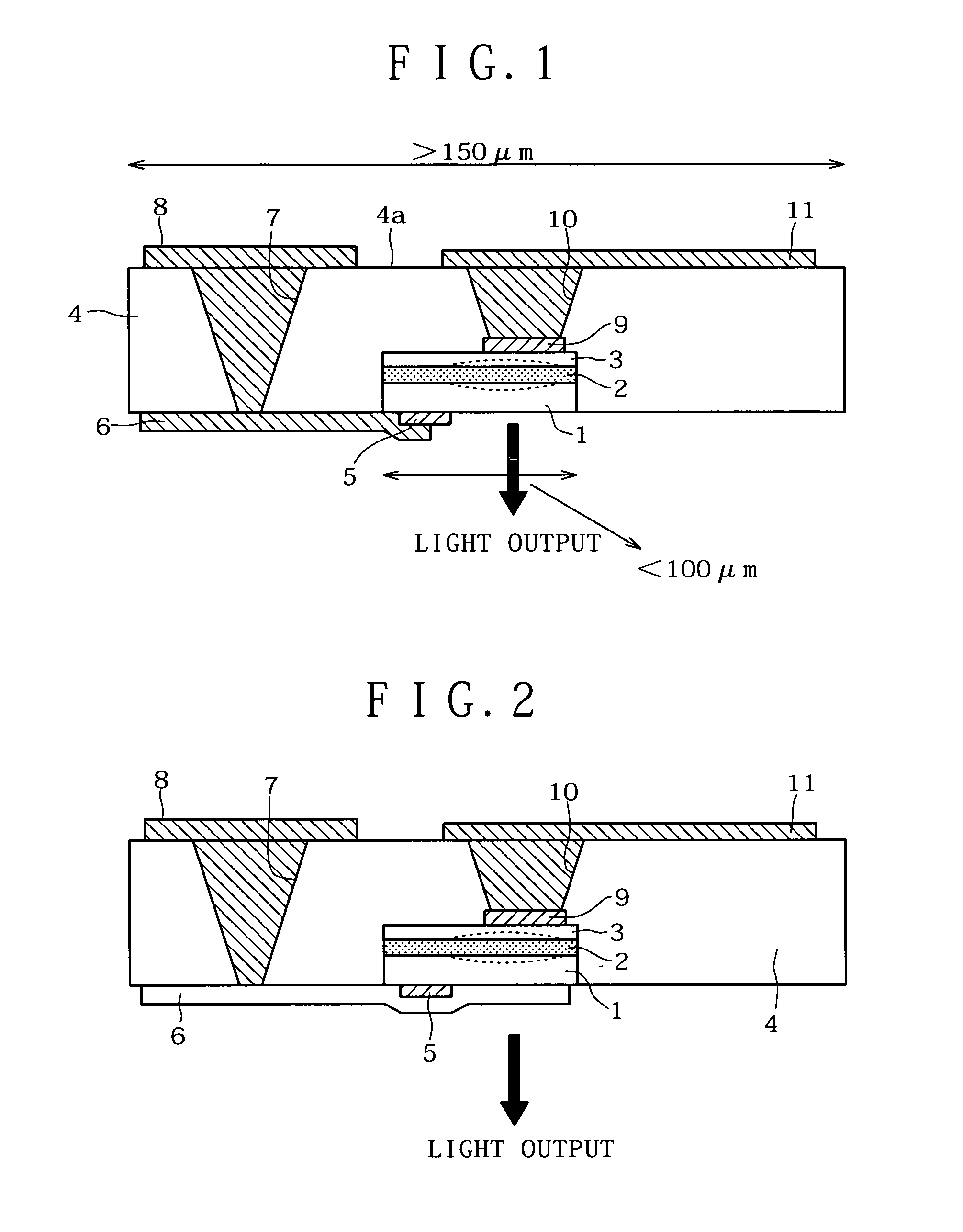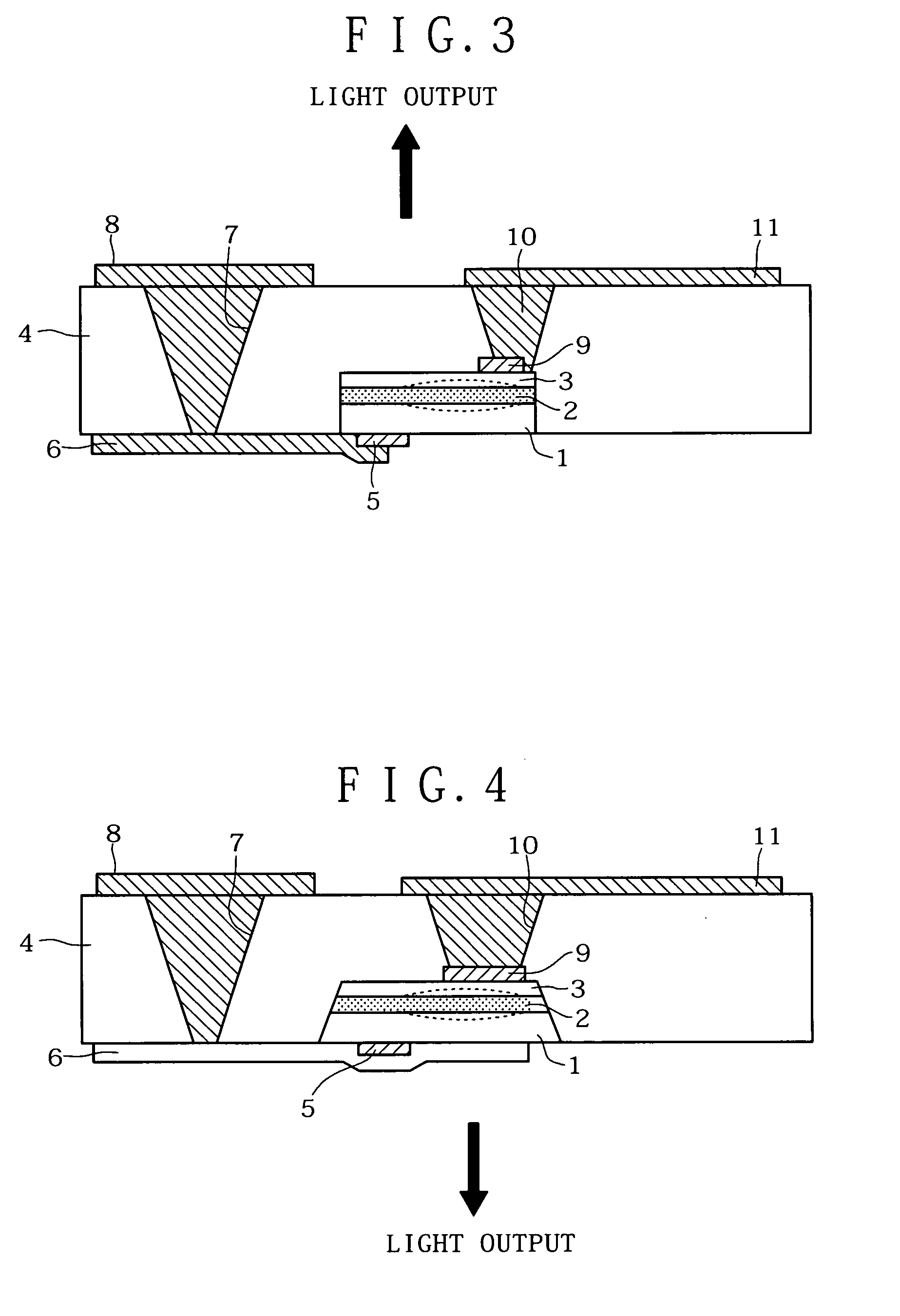Transferring semiconductor crystal from a substrate to a resin
a technology of semiconductor crystals and resins, applied in the field of electronic parts, can solve the problems of unnecessary cost increase, unfavorable current concentration, increase in internal resistance, etc., and achieve the effect of reducing production costs, facilitating electronic parts mounting, and increasing the number of devices formed from a single sheet of crystalline wafers
- Summary
- Abstract
- Description
- Claims
- Application Information
AI Technical Summary
Benefits of technology
Problems solved by technology
Method used
Image
Examples
Embodiment Construction
[0057] Now, an electronic part and a method of producing an electronic part by application of the present invention, and further, an image display system and a method of manufacturing an image display system by application thereof will be described in detail below referring to the drawings.
[0058]FIG. 1 shows an example in which the present invention is applied to a gallium nitride based light-emitting diode. The light-emitting diode is composed of an n-GaN window layer 1 epitaxially grown on a sapphire substrate, a GaInN active layer 2, and a p-GaN clad layer 3. These semiconductor crystal layers are embedded in a resin layer 4. The size of the semiconductor crystal layer is, for example, not more than 100 μm square, and the size of the resin layer 4 is, for example, not less than 150 μm square. Of the GaInN active layer 2, the region surrounded by the broken line is an active region, and a light output in the direction of the arrow is obtained.
[0059] The n-GaN window layer 1 is e...
PUM
 Login to View More
Login to View More Abstract
Description
Claims
Application Information
 Login to View More
Login to View More - R&D
- Intellectual Property
- Life Sciences
- Materials
- Tech Scout
- Unparalleled Data Quality
- Higher Quality Content
- 60% Fewer Hallucinations
Browse by: Latest US Patents, China's latest patents, Technical Efficacy Thesaurus, Application Domain, Technology Topic, Popular Technical Reports.
© 2025 PatSnap. All rights reserved.Legal|Privacy policy|Modern Slavery Act Transparency Statement|Sitemap|About US| Contact US: help@patsnap.com



